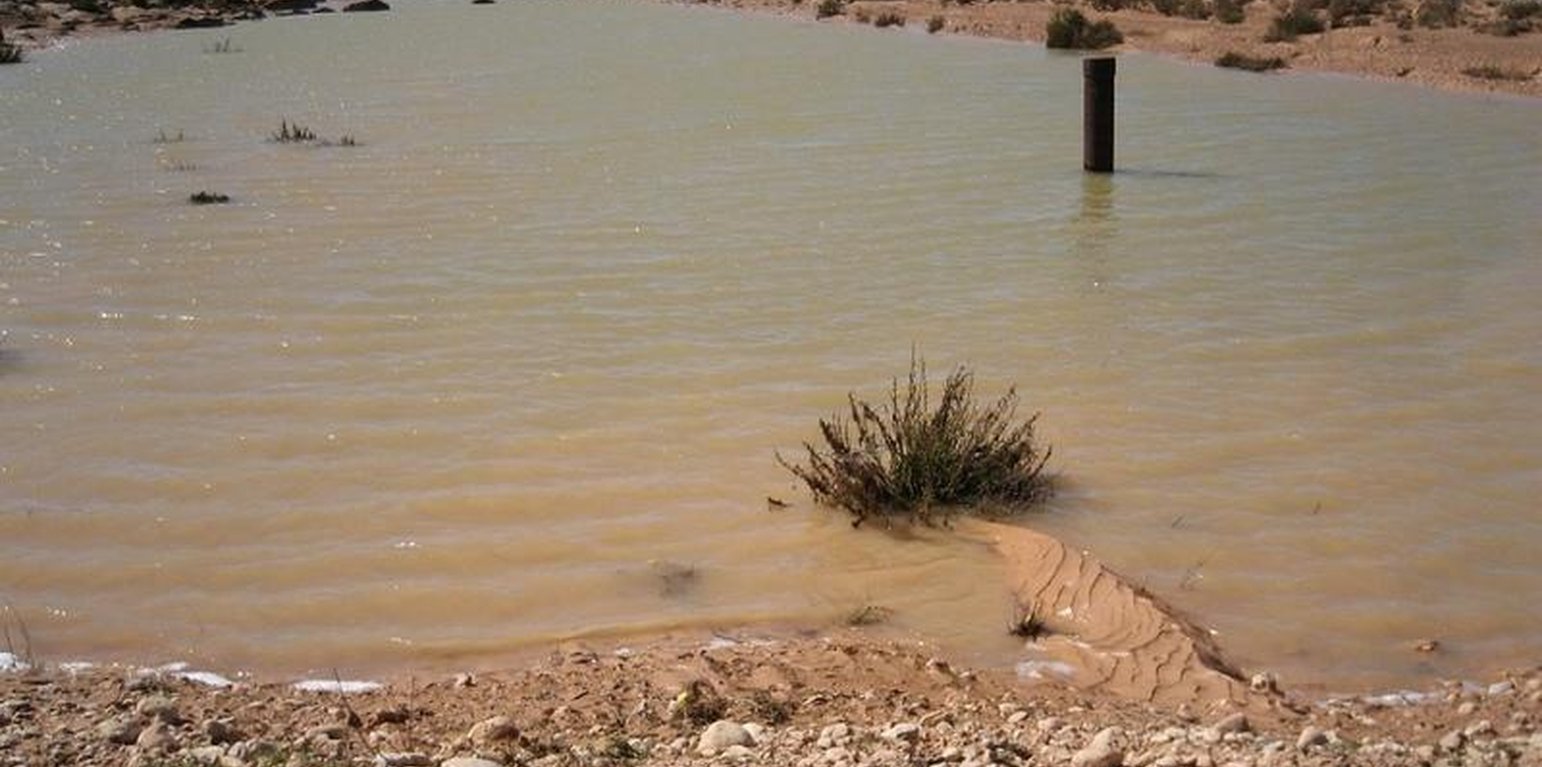



The main worldwide used methods to enhance groundwater replenishment are through recharge basins or recharge wells. Though groundwater recharge aiming at storage of water in the periods of abundance for recovery in times of drought has a long history dating back millennia, the recharge wells began to be used only in the twentieth century, especially during the Second World War following concerns on attacks of the water supply facilities. Its use was extended later to sea intrusion control, treated waste water, water harvesting in the dry areas, and strategic water storage.
Purpose of the Technology: Recharge wells are used in combination with gabion check dams to enhance the infiltration of floodwater into the aquifer. In areas where the permeability of the underlying bedrock in front of a gabion is judged too low, recharge wells could be installed in wadi (ephemeral river) beds. Water is retained by the gabion check dam and it flows through the recharge well allowing accelerated percolation into the aquifer.
Establishment / maintenance activities and inputs: A recharge well consists of a long inner tube surrounded by an outer tube, the circumference of which ranges between 1 and 2 m. The area between the tubes is filled with river bed gravel which acts as a sediment filter. Water enters the well through rectangular-shaped openings (almost 20 cm long and a few mm in width) located in the outer tube, and it flows in the inner hole having passed through the gravel and the rectangular shaped openings of the dill hole. The above-ground height is around 2 to 3 m whereas the depth is linked to the depth of the water table (normally up to 40 m). The drill hole connects directly with the aquifer, where it is connected either directly with the water table or indirectly via cracks. Pond volume is dependent on the size of the gabion check dam but generally ranges between 500 and 3000 m3. The filtered water can directly flow into the aquifer at a rate exceeding what would occur naturally through the soil and the underlying strata.
The design should be conducted primarily by a hydrogeologist and a soil and water conservation specialist in order to determine the potential sites and the required drilling equipment. Drilling needs to be carried out by a specialized company.
Depending on the geological setting, the overall cost is around 5000 to 10000 US$. The recharge wells are used to recharge the deep groundwater aquifers, which are mainly exploited by government agencies. However, private irrigated farms are benefiting indirectly by increased groundwater availability.
Natural / human environment: This technique has been first tried for the replenishment of the Zeuss-Koutine aquifer (south east Tunisia).
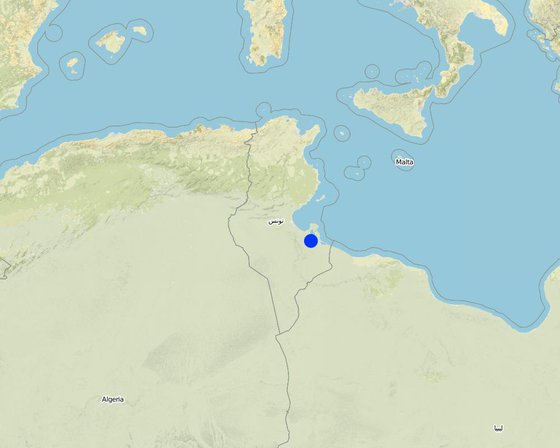
Lugar: Medenine nord, Medenine, Tunisia
No. de sitios de Tecnología analizados:
Difusión de la Tecnología: distribuida parejamente sobre un área (approx. 10-100 km2)
¿En un área de protección permanente?:
Fecha de la implementación: 10-50 años atrás
Tipo de introducción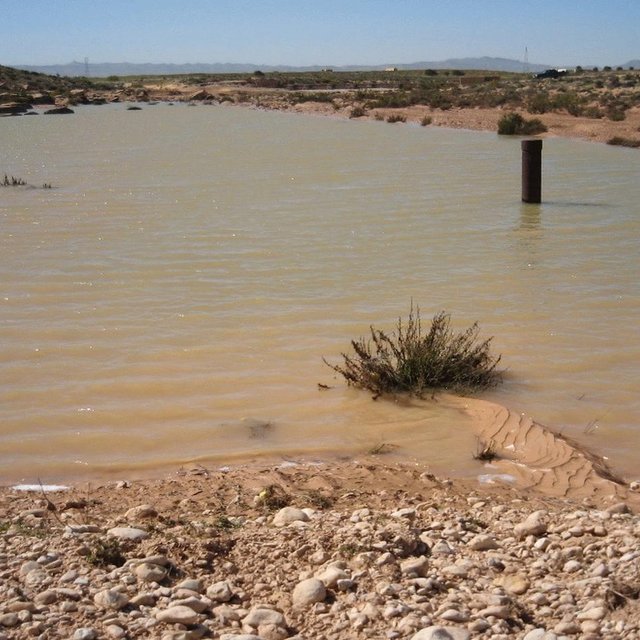
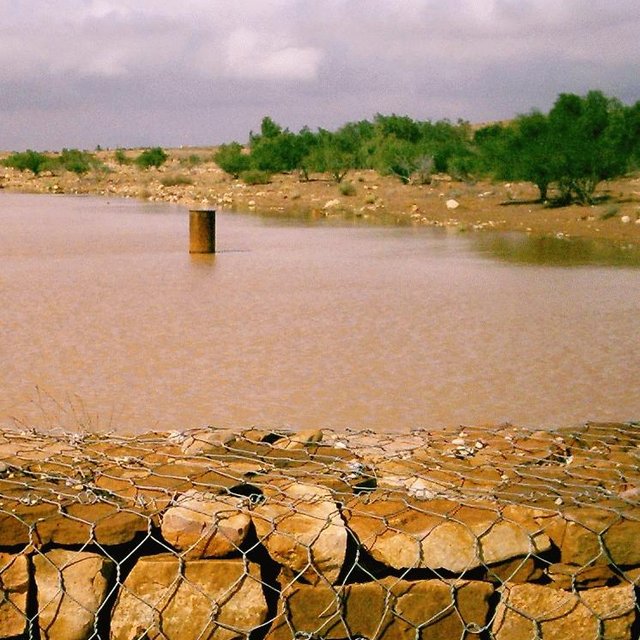





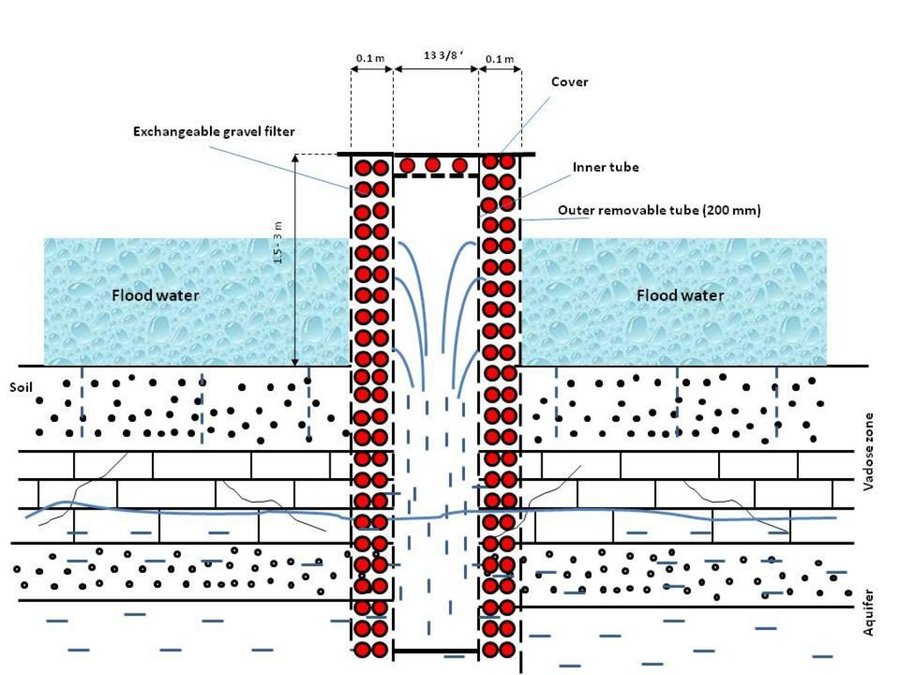
| Especifique insumo | Unidad | Cantidad | Costos por unidad (TND) | Costos totales por insumo (TND) | % de los costos cubiertos por los usuarios de las tierras |
| Mano de obra | |||||
| Labour | ha | 1,0 | 7000,0 | 7000,0 | |
| Material de construcción | |||||
| ha | 1,0 | 1000,0 | 1000,0 | ||
| Costos totales para establecer la Tecnología | 8'000.0 | ||||
| Costos totales para establecer la Tecnología en USD | 6'153.85 | ||||
| Especifique insumo | Unidad | Cantidad | Costos por unidad (TND) | Costos totales por insumo (TND) | % de los costos cubiertos por los usuarios de las tierras |
| Mano de obra | |||||
| Labour | ha | 1,0 | 500,0 | 500,0 | |
| Material de construcción | |||||
| ha | 1,0 | 100,0 | 100,0 | ||
| Indique los costos totales para mantenecer la Tecnología | 600.0 | ||||
| Costos totales para mantener la Tecnología en USD | 461.54 | ||||
Increased availability of water for drinking, agriculture and livestock
In combination with gabion check dams
In combination with gabion check dams